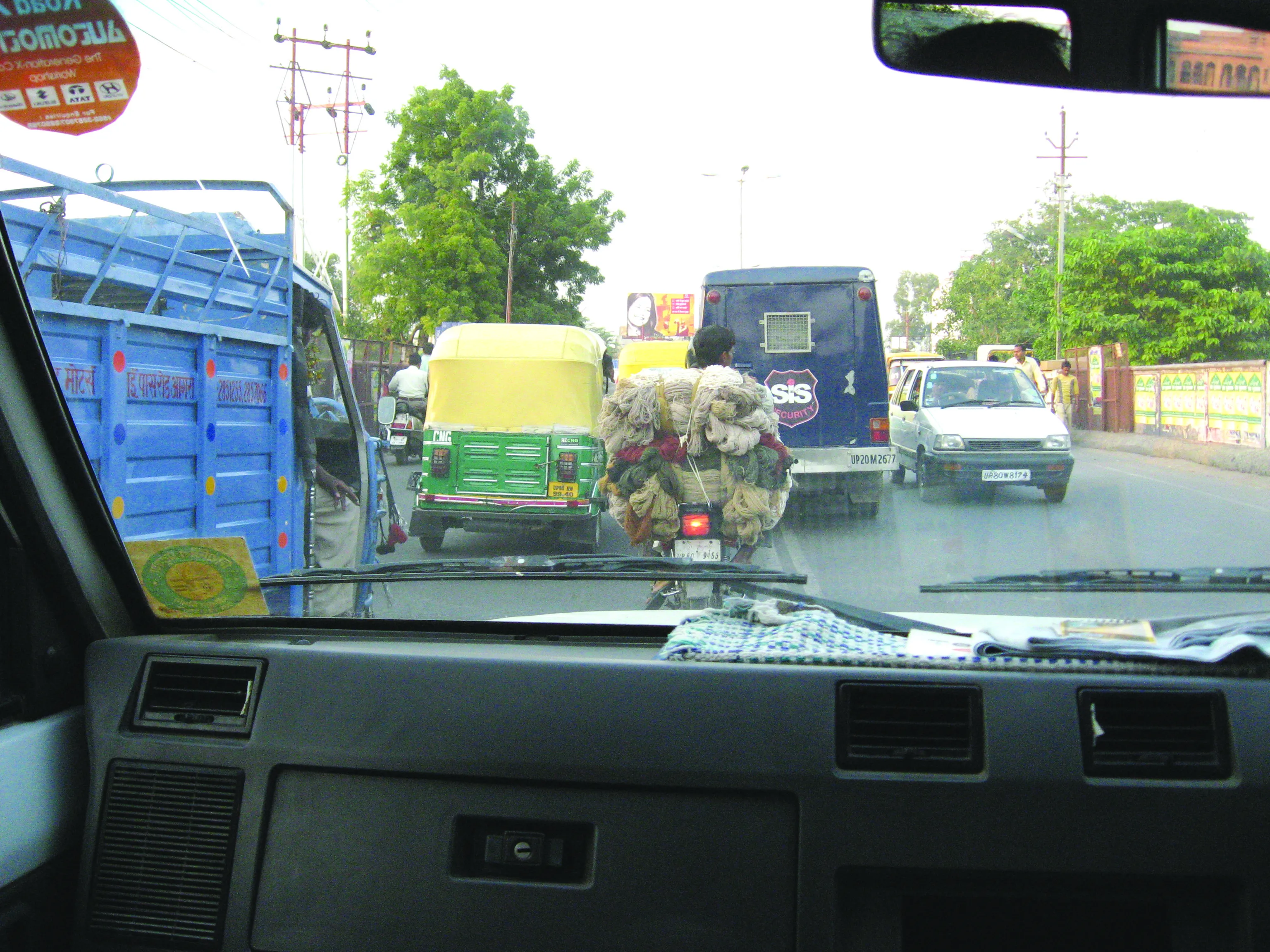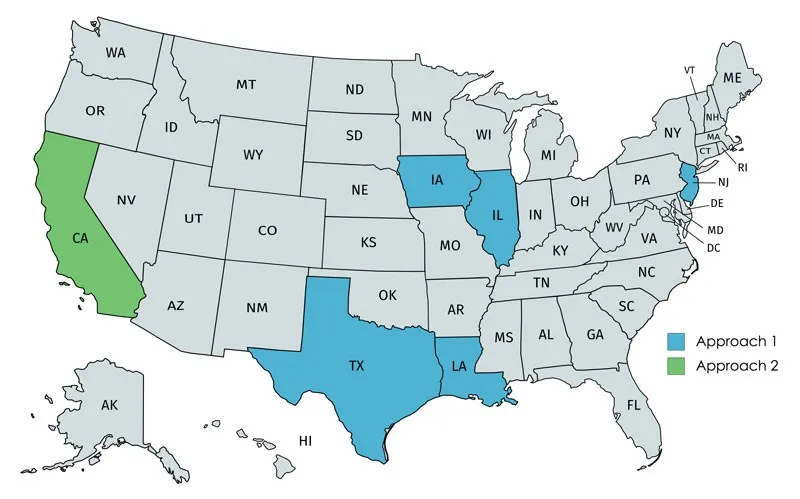High performance markings are among the safety products used to guide traffic safely, but they must be tested and checked. Patrick Smith reports. Road construction zones, zebra crossings, tunnels and areas with frequent fog are particular focal points with regard to road user safety. This is why manufacturers, authorities and contractors are always eager to use innovative road markings and special studs or, where necessary, lane control devices to assist both drivers and pedestrians in all conditions, parti
February 9, 2012
Read time: 7 mins

High performance markings are among the safety products used to guide traffic safely, but they must be tested and checked. Patrick Smith reports
Road construction zones, zebra crossings, tunnels and areas with frequent fog are particular focal points with regard to road user safety. This is why manufacturers, authorities and contractors are always eager to use innovative road markings and special studs or, where necessary, lane control devices to assist both drivers and pedestrians in all conditions, particularly when it is raining at night.Indeed, road markings at the areas mentioned above are usually subject to special requirements with regard to visibility and/or colour. Understanding the interaction between glass beads, road marking materials, and application procedures is essential to improving road safety at critical road sections with stable and well-performing stripings, says Austrian traffic management and materials company
Engineers at its Competence Centre for Glass Technology in Amstetten, Austria, have developed SOLIDPLUS, a new type of glass bead that is said to dramatically increase visibility and durability of road markings over longer periods: the results from several long-term performance test decks are "very encouraging." Produced directly from molten glass, SOLIDPLUS are special EN 1423 Class A reflective glass beads offering high retroreflectivity [the reflection of the light of a vehicle's headlamps back in the driver's direction] and long-term durability, even under tough traffic conditions.
Manufactured within specific gradations and with customised coatings and skid resistance particles, it is claimed SOLIDPLUS beads help extend the performance life of road markings far beyond usual values. They are appropriate for solvent-based, waterborne paints, for two-component spray plastics or structured road marking systems.
"Solvent-based paint markings were combined with SOLIDPLUS bead gradations of 300-850 micron and applied in the Katschbergtunnel on Austria's A10 Tauernautobahn. The initial reflectivity readings of the centreline reached 700 mcd. More than a year later, this centreline value still reads 500 mcd throughout all sections of the tunnel," says SWARCO.
"SOLIDPLUS beads have also proved to be an interesting alternative to pavement marking tapes, for example in highway construction zones, where non-white marking colours are required," says SWARCO.
"Dry readings started with 580 mcd for SOLIDPLUS and still reached 380 mcd after 313 days, whereas alternative systems remained at a much lower level of approximately 150 mcd. Under wet conditions, 313 days after application, the yellow SOLIDPLUS zebra crossing still provided 58 mcd, with the alternative solution delivering no more than 12 mcd. By comparison, the Austrian standard for such applications prescribes a minimum of 35 mcd under wet conditions."
Rainline on the M1
The UK's M1 motorway is over 50 years old, but theRecent works on the motorway, which links London in the south with Leeds in the north, include a huge widening project (from three to four lanes in each direction) between junctions 25-28 near the city of Nottingham. Here, the Highways Agency (HA) wanted to use an "innovative and sustainable" road marking to help ease traffic congestion and improve road safety, day and night and in all weather conditions.
At night and in wet conditions, when the chance of an incident increases markedly, road markings should help road users make better decisions regarding the speed and direction for the road ahead, yet ironically conventional markings actually become more difficult to see, says Ennis Prismo.
"We require a product that helps the Highways Agency achieve its aims of safe roads, reliable journeys and informed travellers, while being sensitive to the environment and sustainable," says Stephen Wrenn, HA project manager.
Night-time safety
Italian manufacturer of premium quality road marking tapes,"These products, both for temporary and permanent use, are constructed using high-grade polymerised material, which allows the tape to resist wear and last much longer than paint," says the company "Snoline Tempoline and Tikappa products are certified lead-free for the preservation of the environment and consumer safety, and sport a pressure-sensitive adhesive layer that allows for an extremely strong bond to any type of concrete or pavement surface. They are also fitted with anti-skid particles to improve their resistance to vehicles driving and sliding over them." Snoline says that the two product ranges can be wet reflective, and this means that the glass beads embedded on their top layers increase reflectivity significantly and permit the tape to function normally, not only during periods of low visibility or limited light sources, but also in the rain.
ViziSpot tested
Meanwhile, in Germany measurements from August 2010 are said to show that the thermoplastic road marking ViziSpot from"The average results of the measurements of retroreflectivity of the eight lines of ViziSpot show RL (night visibility) = 202 mcd; RW (wet conditions) = 40mcd and Qd (day visibility) = 171 mcd, with over 90% of the marking still there.
ViziSpot is a thermoplastic Type II road marking combining ViaTherm thermoplastic, UCme surface material and machinery into a performing road line.
Also performing at the test site is the preformed thermoplastic Type I marking PREMARK Vizibility. The average of its measurements show RL = 272 mcd; Qd = 175 mcd, and SRT (skid resistance tester) = 56 mcd and again over 90% of the marking is also still there.
"Over the years, the markings have been exposed to winter service. In total, snowploughs with steel blades have passed over the test field 1,173 times in the four years since the application in August 2006. Also, the test field has been salted 1,569 during those years," says Geveko.
In total, 88 samples were placed at the test field in 2006 by 16 companies from seven European countries. It was a mix of paint, cold spray plastic, cold plastic, thermoplastic and tape.
3M Stamark tapes
The tape range uses 3M's 'extended season' adhesive package allowing for primerless applications on new and old surfaces including pre-existing road markings. [Primerless applications can be used when the weather conditions satisfy the requirements of the 3M Application Climate Guide].
An example of the 3M Stamark Pavement Marking Tape is its Series A380ESD, a premium longline road marking tape that incorporates 3M high index ceramic beads while the raised profile structure of the tape provides wet reflectivity by allowing surface water to run through the channels.
The specially formulated top coat provides a highly durable surface that bonds strongly to the reflective beads "resulting in up to eight years of reflectivity over 150mcd (dry) in European applications."









